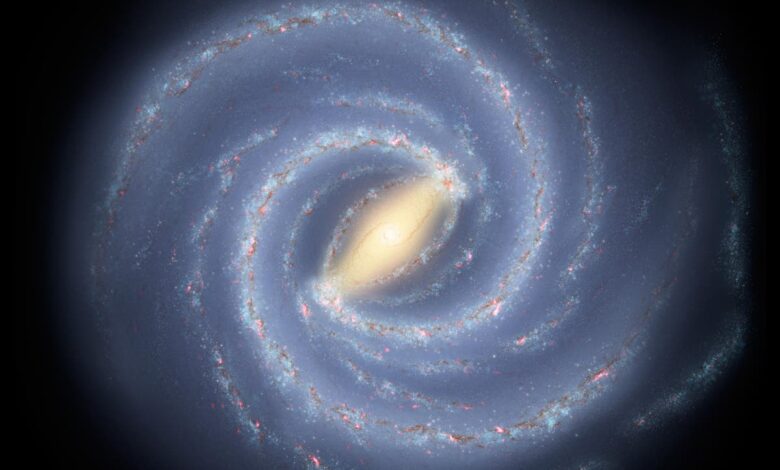Scientists now know exactly how old our Milky Way galaxy is

Scientists now know the precise age of our galaxy, dating the formation of some parts of the Milky Way to just 800 million years after the Big Bang.
In a new paper published Wednesday in the journal Nature, astronomers Maosheng Xiang and Hans-Walter Rix of the Max-Planck Institute for Astronomy used a survey of nearly a quarter of a million stars to clock the development of the Milky Way, taking advantage of existing knowledge of stellar lifecycles to better understand the longer galactic lifecycle.
The spiral disk of the Milky Way can be split into two populations, the thin, inner disk of younger stars, of which our Sun belongs, and a thick disk, somewhat older stars that extend further out from the plane of the galactic spiral. Surrounding the galaxy overall is also the halo, a sparse population of older stars.
Xiang and Six found that the the thick disk likely began forming around 13 billion years ago, or 800 million years after the Big Bang, while the inner galactic halo formed around two billion years later. The assembly of the inner halo took place through ancient Milky Way’s merger with the Gaia-Enceladus galaxy, a dwarf galaxy that mostly merged with our galaxy between 8 and 11 billion years ago.
To make the discovery, the researchers made use of stellar clocks — low mass stars in the “sub-giant” phase. When a low mass star like the Sun begins to use up its hydrogen, it’s core contracts as a sort of counterweight to the pressure of its own gravity pushing it toward collapse. Later, hydrogen in a shell around the stars care will ignite and swell the star up into its giant phase, but while still a sub giant, a star’s luminosity is tightly correlated with its age.
Unfortunately, stars only spend a few millions of years in the sub giant phase, so a massive survey of stars is necessary to find enough of these stars to get useful data. So Xiang and Six used the data from the Large Sky Area Multi-Object Fibre Spectroscopic Telescope (Lamost) in China, and the European Space Agency’s Global Astrometric Interferometer for Astrophysics (Gaia) spacecraft to survey 247,104 subgiant stars ranging in age from 15. Billion to 13.8 billion years old.
The results, when combined with future surveys using the same technique, could help astronomers better understand how galaxies form, how our galaxy formed, and how we came to be here to ponder either question.
“With an innovative approach to estimating the birth dates of stars, Xiang and Rix have succeeded in helping us to better understand how our Galaxy formed,” University of Notre Dame physicist Timothy Beers wrote in a commentary also appearing in Nature on Wednesday.
“And the approach is scalable, which means that, as data for larger samples of stars in the Milky Way become available, this picture will come into even sharper focus.”





